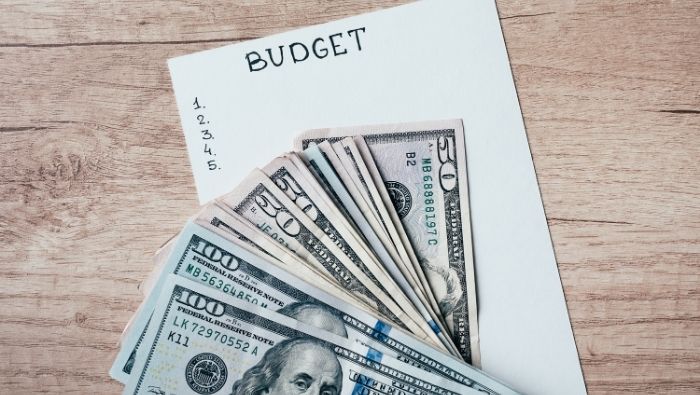7 Steps to Budgeting on a Variable Income
Budgeting for variable income can be tricky, but it is doable. Even if you’re on a commission, you can create a spending plan to work for you with these seven steps.

It’s hard enough to live within a spending plan while working a steady job. It’s downright difficult when your income fluctuates. This fluctuation makes it extremely difficult to follow a set spending and saving plan from month to month.
As a commissioned sales professional, my monthly income can vary by thousands during the year. A $6,000 paycheck in February can dwindle to $2,000 by November. Through much trial and error, I’ve learned how to create a financial plan that works for me, and I’ve discovered that the key is to eliminate financial surprises.
Here’s some advice for others struggling with a variable income:
1. Maintain an emergency fund of nine months to one year.
While most financial experts recommend an emergency fund of three to six months, I recommend at least one year.
If your income is variable, it is undoubtedly connected directly to the economy, and as the economy weakens, your paycheck gradually lessens. You may not be entirely out of work, but your income might fall well below your fixed monthly expenses, making it necessary to dip into the fund for several months.
Build an Emergency Fund
With these simple tips and tools, you can build an emergency fund, even while living paycheck to paycheck.
2. Know your fixed monthly expenses and pay these first before you buy anything else.
I use a simple Excel spreadsheet (I’m too cheap to spend money on a software program), which lists my rent payment, utilities, car insurance, etc. These are fixed amounts for the month. I also estimate expenses for variables, such as gas, groceries, entertainment, etc.
When the limit for each category is reached, the spending is done for the month. It’s a way to create some predictability in your unpredictable financial world.
3. After your fixed monthly expenses are paid, use what’s left for savings and luxuries.
Pick a percentage of your after-bills income to go directly into savings. 50% is a good number (more is better).
What’s left is discretionary and left to your heart’s desires. Blow it on clothes or concert tickets, or put it into a separate savings account to save for big-ticket items, such as a new car, vacations, etc.
4. Sign up for budget plans/payments whenever possible.
Most utility companies will set up your account on regular payments. Most insurance companies will do the same for a small fee (I pay $1 per month extra), which prevents a large premium payment every six months.
The key here is to eliminate surprises and keep your monthly expenses as even as possible.
Sign Up for Savings
Subscribe to get money-saving content by email that can help you stretch your dollars further.
Twice each week, you'll receive articles and tips that can help you free up and keep more of your hard-earned money, even on the tightest of budgets.
We respect your privacy. Unsubscribe at any time.
5. Do not sign up for automatic payments.
Automatic payment is a luxury for those who have fixed incomes.
When your income is unpredictable, you must control your cash flow and know exactly when money is taken from your account. The minor hassle of writing a check or paying online is worth the $10 or more per month you flirt with in overdraft fees.
6. Keep track of your expenses.
Again, the key to living on a variable income is eliminating surprises. The worst surprise in the world is receiving a huge credit card bill at the end of the month and wondering where all the charges came from and how you’ll be able to pay it off.
7. Lower your salary.
What was your lowest monthly income in the past year? Make this your base salary and keep all fixed monthly expenses (including car payments and rent/mortgage) below this amount.
Can’t do it? Then whatever would you do if you lost your job or couldn’t work for six months?
Keeping fixed expenses below this amount will keep you financially stable during the lean months while giving you extra money to save during the rich months. (And the added sense of security is immeasurable.) Do not average your monthly income for this guideline. Averaging will only leave you short on those lean months when you make the least, especially if your work is seasonal and several lean months follow in a row.
Your income might be unpredictable, but your spending doesn’t have to be. By keeping fixed expenses low and keeping track of your spending, you’ll soon be looking at your ever-changing paycheck as an opportunity rather than a nasty monthly surprise.
Reviewed August 2024
Sign Up for Savings
Subscribe to get money-saving content by email that can help you stretch your dollars further.
Twice each week, you'll receive articles and tips that can help you free up and keep more of your hard-earned money, even on the tightest of budgets.
We respect your privacy. Unsubscribe at any time.
Popular Articles
On After50Finances.com
- 9 Things You Need to Do Before You Retire
- You Didn’t Save Enough for Retirement and You’re 55+
- When Empty Nesters Reorganize and Declutter Their Home
- Reinventing Your Career in Your 50s or 60s
- What Mature Homeowners Should Know about Reverse Mortgages
- 2 Reasons to Collect Social Security Benefits As Soon As Possible

